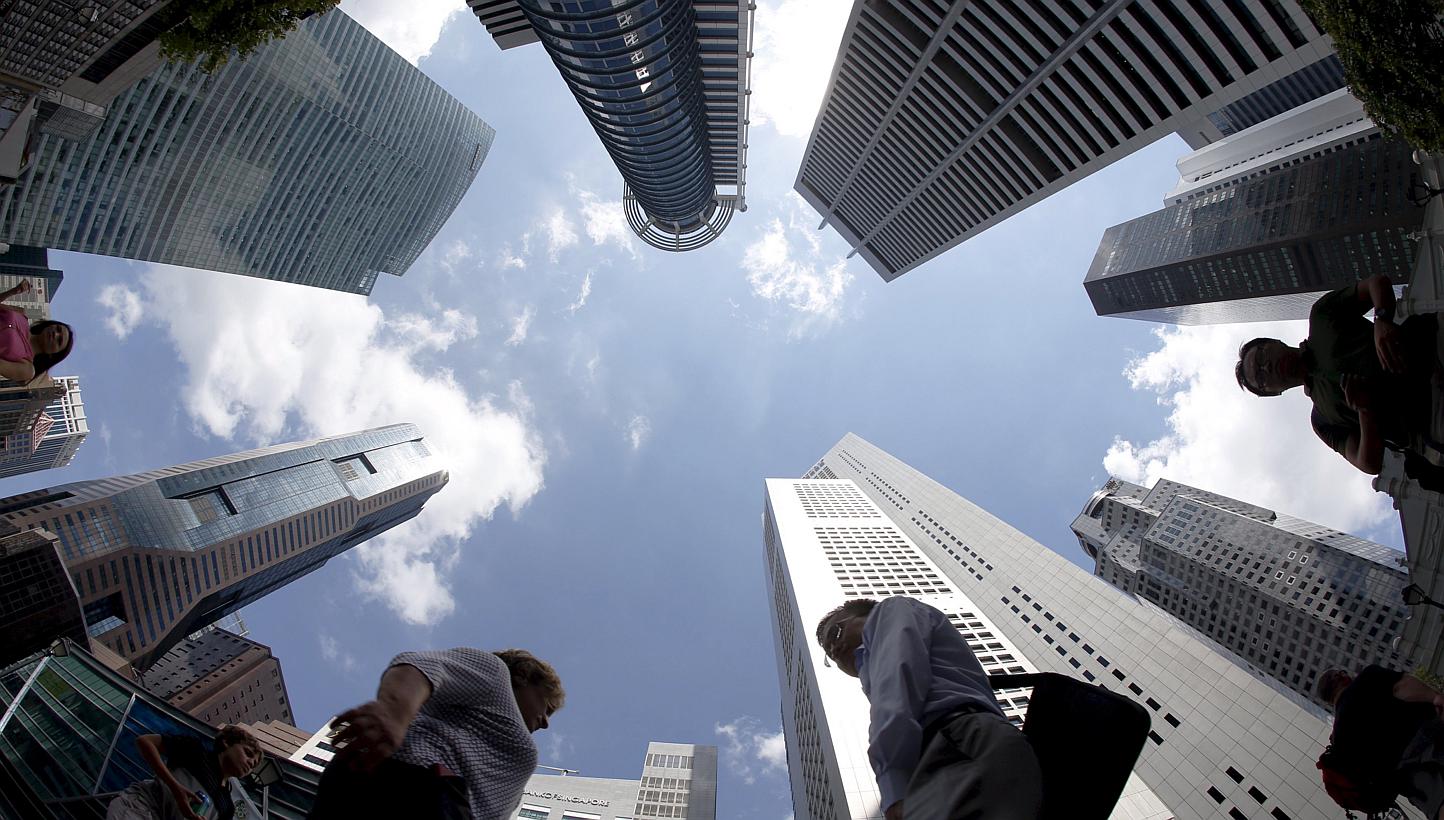PMI falls across Asia: What is this economic index and why is it so closely watched?
Sign up now: Get ST's newsletters delivered to your inbox

People walk past office buildings at the central business district in Singapore in this April 14, 2015 file photograph. The tough times show no sign of letting up for manufacturers in Singapore and across Asia going by dismal PMI numbers out on Monday. -- PHOTO: REUTERS
Follow topic:
SINGAPORE - The tough times show no sign of letting up for manufacturers in Singapore and across Asia going by dismal PMI numbers out on Monday.
The Purchasing Managers' Index for Singapore fell again in April, the fifth straight month of decline. China's official PMI recorded its weakest April reading since the series started in 2005. South Korea's PMI fell to a six-month low in April while Taiwan's PMI number for the month hit a 21-month low.
But what is this PMI and why does it matter?
What is the PMI?
The PMI is an indicator of business activity - both in the manufacturing and services sectors. It is a survey-based measures that asks the respondents - purchasing managers of private-sector fims - about changes in some key business variables from the month before. It is calculated separately for the manufacturing and services sectors and then a composite index is constructed.
How is the PMI derived?
From a series of qualitative questions. Executives from a reasonably big sample, running into hundreds of firms, are asked whether key indicators such as output, new orders, business expectations and employment were up/down/same as the month before.
A key feature of the PMI surveys is that they ask only for factual information. They are not surveys of opinions, intentions or expectations and the data therefore represent the closest one can get to "hard data" without asking for actual figures from companies.
Respondents are asked to take expected seasonal influences into account when considering their replies. They are also asked to provide a reason for any change on the previous month, if known.
How does one read the PMI?
A figure above 50 denotes expansion in business activity. Anything below 50 denotes contraction. Higher the difference from this mid-point, the greater the expansion or contraction. The rate of expansion can also be judged by comparing the PMI with that of the previous month's data. If the figure is higher than the previous month's then the economy is expanding at a faster rate. If it is lower than the previous month then it is growing at a lower rate.
What are its implications for the economy?
The PMI is usually released at the start of the month, much before most of the official data on industrial output, manufacturing and GDP growth becomes available. It is, therefore, considered a good leading indicator of economic activity.
Economists consider the manufacturing growth measured by the PMI as a good indicator of industrial output, for which official statistics are released later. Many economists will adjust their GDP estimates after reading the PMI report.
Central banks of many countries also use the index to help make decisions on interest rates.
What does it mean for financial markets?
The PMI also gives an indication of corporate earnings and is closely watched by stock investors as well as the bond markets. A good reading enhances the attractiveness of an economy vis-a- vis another competing economy.
Who produces the PMI?
The two main producers are Markit Group, which conducts PMIs for over 30 countries worldwide, and the Institute for Supply Management (ISM), which conducts PMIs for the US.
Other similar purchasing managers indices are produced by the IFO in Germany, The Bank of Japan in Japan (tankan), the official China PMI by the country's National Bureau of Statistics, and the Swedish PMI run by private bank Swedbank.
In Singapore, the index is compiled by the Singapore Institute of Purchasing & Materials Management.
Sources: Economic Times, Investopedia

